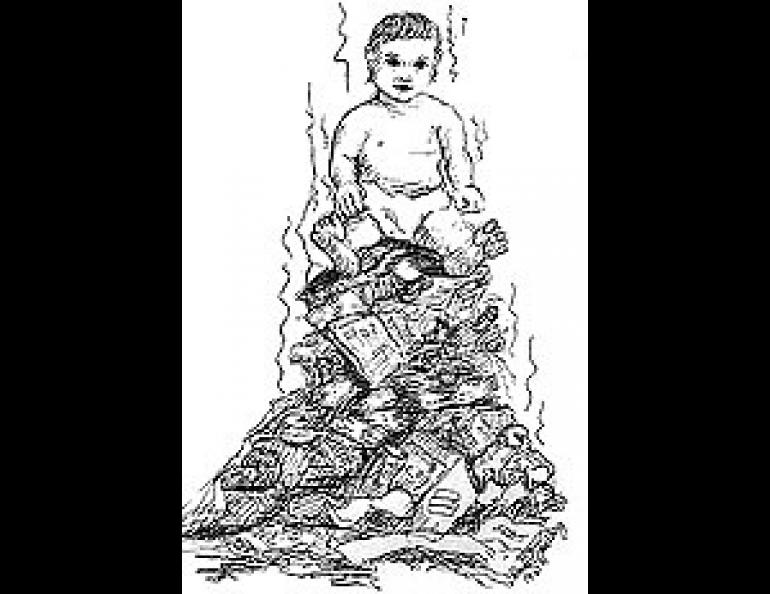
Those Dirty Diapers
Twenty-odd years ago, disposable diapers looked like a perfect boon to parentkind. By the end of the 1980s, this simple item had become a bane, conjuring up images of over-burdened landfills at least, a ruined planet at worst. The disposable diaper had become a kind of environmentalist battle flag, and regretful mothers and fathers were returning in droves to cloth diapers and laundry duty.
A good scientist will pursue the truth, no matter where that pursuit leads. Charles Gerba, of the University of Arizona in Tucson, reported on the work of a team that checked on one of the greatest fears attending use of the disposables: that they could preserve, alive, hordes of disease-causing organisms. Certainly many live germs leave the human body via feces, but no one knew how they fared in diapers buried in landfills.
The team exhumed more than 200 soiled diapers from landfills in New York, Florida, and Arizona. They tested fecal samples from each diaper for an array of common disease organisms, from viruses to parasites (including Giardia, a nasty little beast that lurks in some of Alaska's clear streams). They found not a single live pathogen.
The diapers had been buried for between two and ten years, but one must still admire the commitment of the researchers.
People heartened by that finding may take greater comfort from another report released before the society's meeting. Franklin Associates, of Prairie Village, Kansas, undertook an environmental audit in which they attempted to compare all costs associated with disposable diapers against those for cloth diapers. They looked at diaper manufacturing, packaging, disposal or washing, and associated products, such as plastic overpants and pins. They tried to put good numbers on everything they could verify.
Disposables came out, so to speak, on top. Over the course of a year of diapering one baby, disposables take about half as much energy as cloth diapers (the equivalent of 53 gallons of gasoline). They use up one-quarter as much water (still a substantial 2,570 gallons), generate half as much air pollution (16 pounds of combustion products), and produce only one-seventh of the water pollution (3 pounds).
For their calculations, the environmental auditors combined commercially laundered cloth diapers with home-washed ones. They did note differences between the two treatments, though. Diapers washed at home took 19 percent less water but 79 percent more energy. Home laundering also led to twice as much air pollution as did commercial washing.
But, as might be suspected, they found one category in which disposable diapers came out a distant second. They send four times as much solid waste to landfills as do reusable cloth diapers.
Since I haven't seen the report itself, merely the synopsis presented in Science News, I can't testify to the thoroughness of Franklin Associates' audit. Did they consider the energy cost in fertilizing cotton fields on the cloth-diaper side of their ledger? Did they assume a minimum wage for parents' diaper-washing time? An environmental audit is an enormously complex undertaking, and even its initial assumptions probably demand cold-eyed scrutiny.
But there is one hopeful sign for parents yearning for the convenience of disposables while trying to keep their environmental consciences as clean as their babies' bottoms: diaper manufacturers are trying to overcome the landfill-overload problem. The Procter & Gamble Company has announced that it is working hard on developing disposable diapers that can be composted--decomposed into organic soil just like vegetable waste. The company also vows to commit $20 million to advancing municipal composting worldwide.
If the company can follow through on its promises, its competitors will have to follow suit. But then, of course, it remains to be seen if municipalities will set up compost systems. Diaper services may have long lives ahead.





